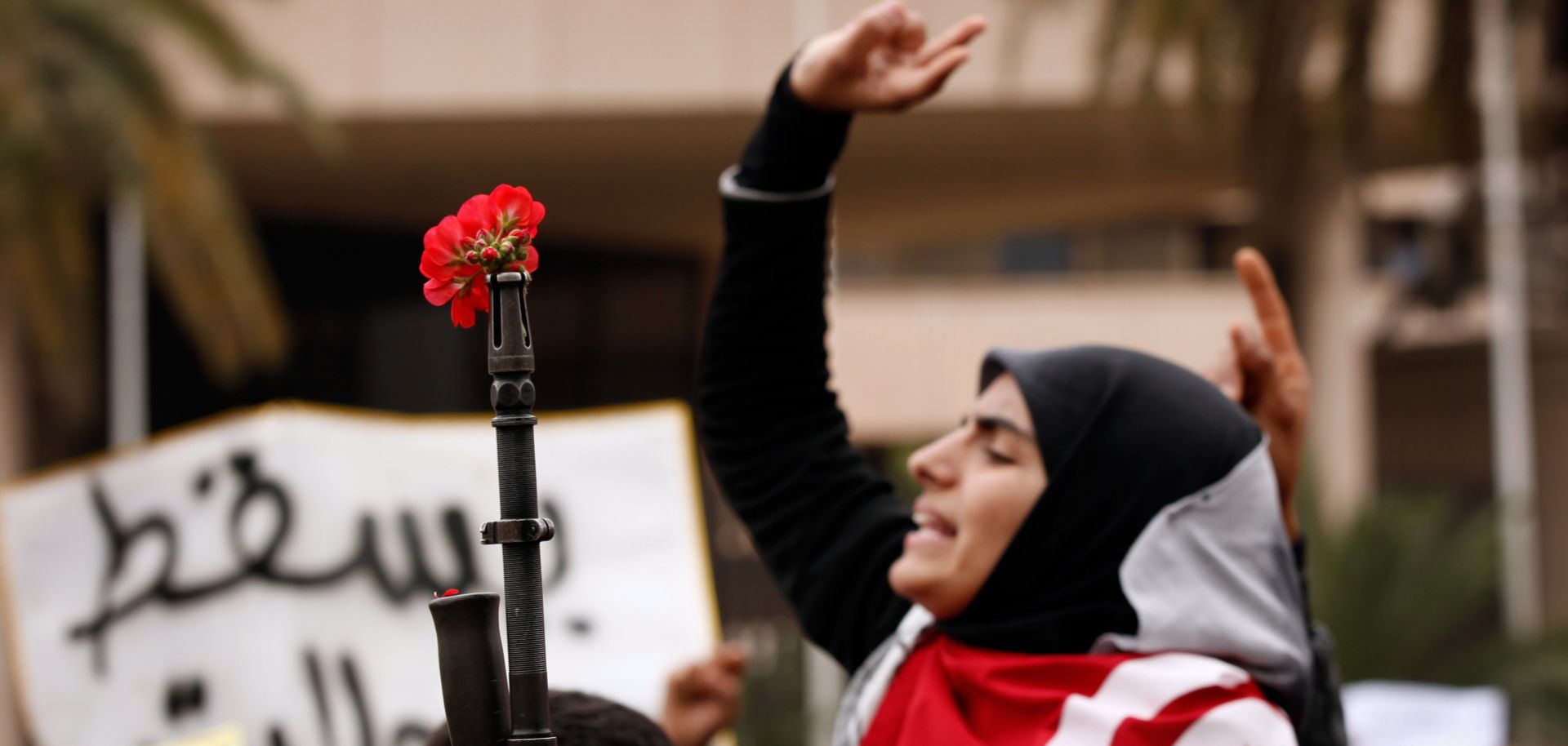REFLECTIONS
Seven Years Later, Tunisia Still Stands Apart
Jan 14, 2018 | 14:53 GMT

Demonstrators place flowers in the barrels of soldiers guns as people take to the streets again to protest for changes in Tunisia's new government on January 20, 2011 in Tunis, Tunisia. Police fired warning shots into the air as demonstrators demanded that ministers linked to ousted president Zine al-Abidine Ben Ali leave the government. Crowds gathered outside the party headquarters of the Constitutional Democratic Rally (RCD), the ruling party for decades, and cheers erupted as the party signs were torn down from the building. Tunisia's new interim government held its first cabinet meeting, nearly a week after President Zine al-Abidine Ben Ali fled the country. (Photo by Christopher Furlong/Getty Images)
(CHRISTOPHER FURLONG/Getty Images)
Subscribe Now
SubscribeAlready have an account?
